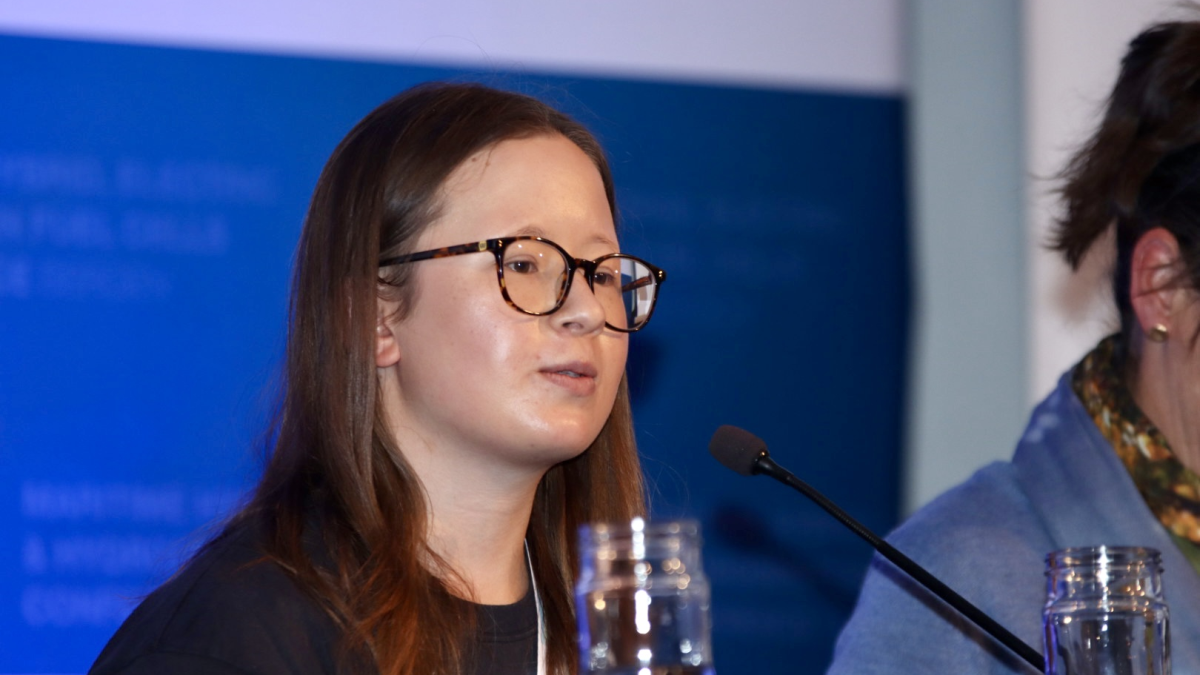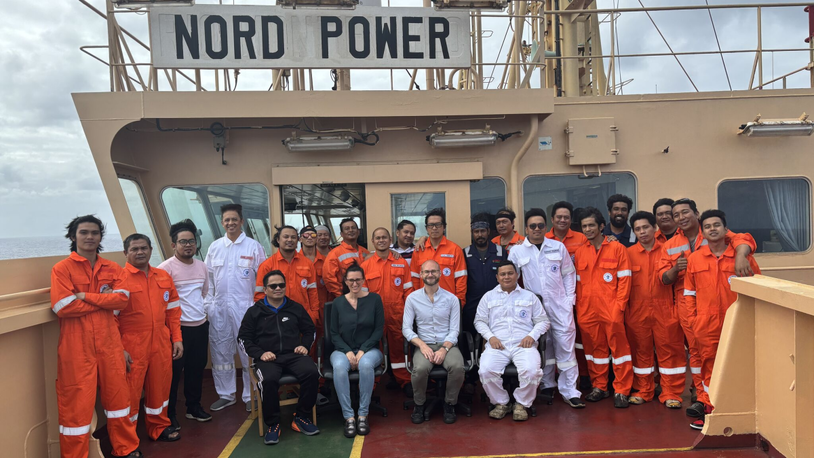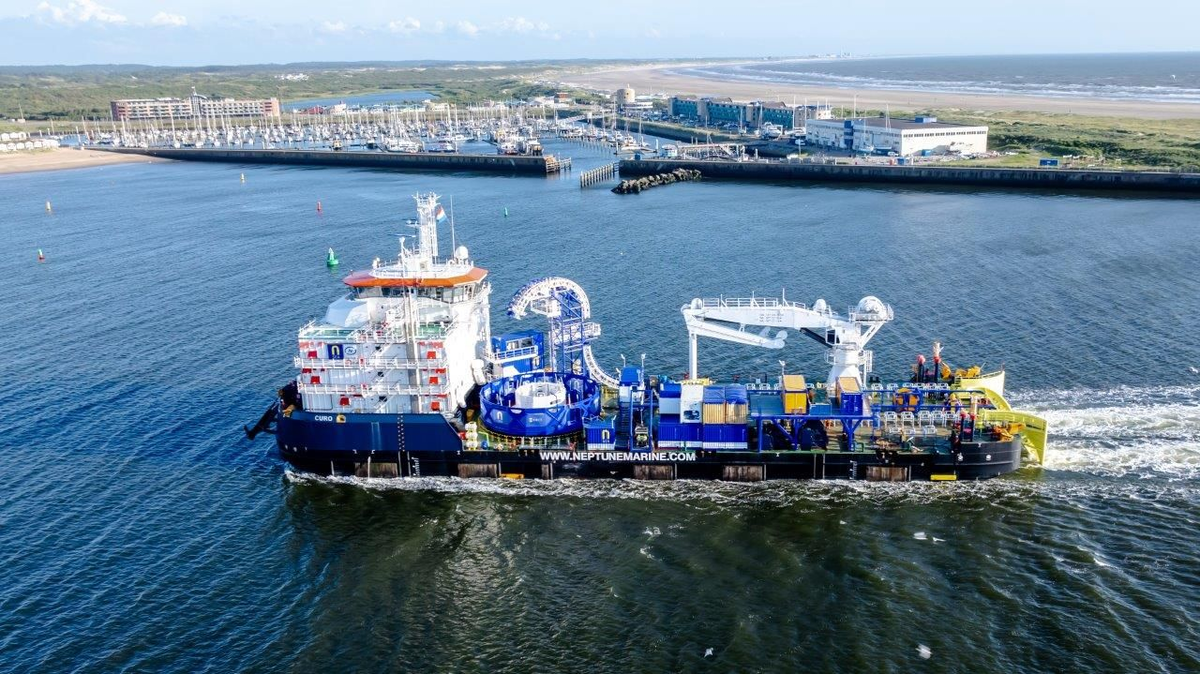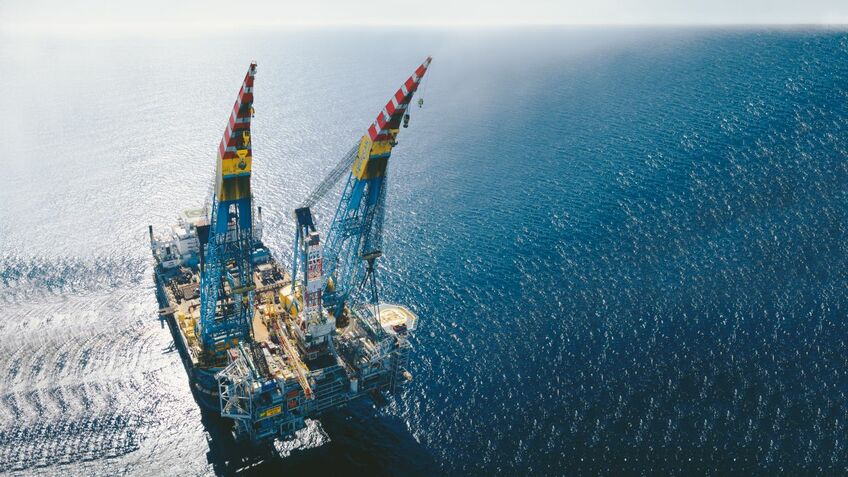Business Sectors
Events
Contents
Register to read more articles.
Hydrogen-powered support vessels unveiled
A fleet of support vessels is being built ready to use a liquid organic hydrogen carrier (LOHC) to support offshore windfarms, and an unmanned survey vessel is being constructed for surveys
Østensjø is working with Hydrogenious to commercialise the use of LOHC to supply hydrogen to fuel cells for service operating vessels (SOVs) constructed in Norway. A fleet of up to 10 vessels, to be operated by Edda Wind, is being built ready to use LOHC from a dedicated bunkering facility.
Built with diesel engines and azimuth thruster propulsion to support construction and maintenance on offshore windfarms, they are ready to use LOHC as they have the tank capacity, piping and systems prepared for this technology.
The first demonstration will be within the HyNjord project to develop marine pilots with Norway’s Enova funding for zero-emissions power on vessels in 2025.
Hydrogenious and Østensjø are part of the Ship AH2Oy project with European Union funding to introduce an LOHC power unit on a vessel and develop a commercial unit ready for 2026.
Hydrogenious LOHC Maritime general manager Øystein Skår said the Edda Wind SOVs include 2022-built Edda Breeze, which is operating from Emden in the German sector of the North Sea.
“Edda Breeze is prepared for the green shift,” he said at Riviera Maritime Media’s Maritime Hybrid, Electric Hydrogen Fuel Cells Conference in Bergen, Norway, 17 October.
“The plan is to stop the diesel generators and install an LOHC system in the aft of the ship in 2026-27. This is part of the commercial roll out of a 1-MW system from 2026.”
LOHC is a benzyl toluene oil handling hydrogen that can be extracted in an exothermal reaction with a catalyst on vessels. Hydrogen would be fed to fuel cells to generate power for propulsion and onboard energy needs.
Dehydrogenated carrier oil would be stored on the vessel in separate tanks ready to be debunkered when back in port, where hydrogenated LOHC would be loaded.
In the UK, Sea-Kit International is developing an unmanned surface vessel (USV) to be powered by a small hydrogen fuel cell from 2025.
It is using its experience of building and operating X-class USVs for surveys and new propulsion technology to introduce this concept vessel in the Thames Estuary.
Port of London Authority intends to use this vessel as a zero-emissions demonstration as part of the ZEPHR project.
Sea-Kit naval architect Chloe Fisher told Riviera Maritime Media this vessel will be built at the company’s facilities in Essex, UK, ready for remote control using redundant satellite and mobile network communications in 2025.
This 14-m H-Class uncrewed vessel will operate on the Thames for at least three years undertaking hydrographic surveys, she said.
“We will be working with Port of London to carry out surveys remotely and ensure this USV can handle currents and tides in the estuary,” Ms Fisher explained.
During the vessel design process, Sea-Kit looked at the hullform and different operational requirements, then various general arrangements and sequencing, seakeeping and manoeuvring, and the location of the fuel tanks. It incorporated the UK Maritime & Coastguard Agency, designers, operators and builders in the project.
It also worked with Lloyd’s Register (LR), which awarded Sea-Kit approval under the unmanned marine systems code in 2021 and worked with LR on risk-based certification for alternative fuels.
Ms Fisher said the design includes compressed hydrogen gas tanks on the deck, a proton-exchange membrane fuel cell of less than 200 kW capacity and two 60-cm very small aperture terminals for satellite communications between the vessel and the UK-based remote control centre.
“Our client base is interested in this USV,” she said. “It is about taking the first steps, using a diverse team and challenging the norms. Lessons from this project can be used for other projects.”

Riviera Maritime Media’s Maritime Decarbonization Conference, Americas will be held 12-13 December 2023 in Houston, USA. Use this link for further information and to register your interest
Related to this Story
Events
Maritime Environmental Protection Webinar Week
Cyber & Vessel Security Webinar Week
The illusion of safety: what we're getting wrong about crews, tech, and fatigue
Responsible Ship Recycling Forum 2025
© 2024 Riviera Maritime Media Ltd.














